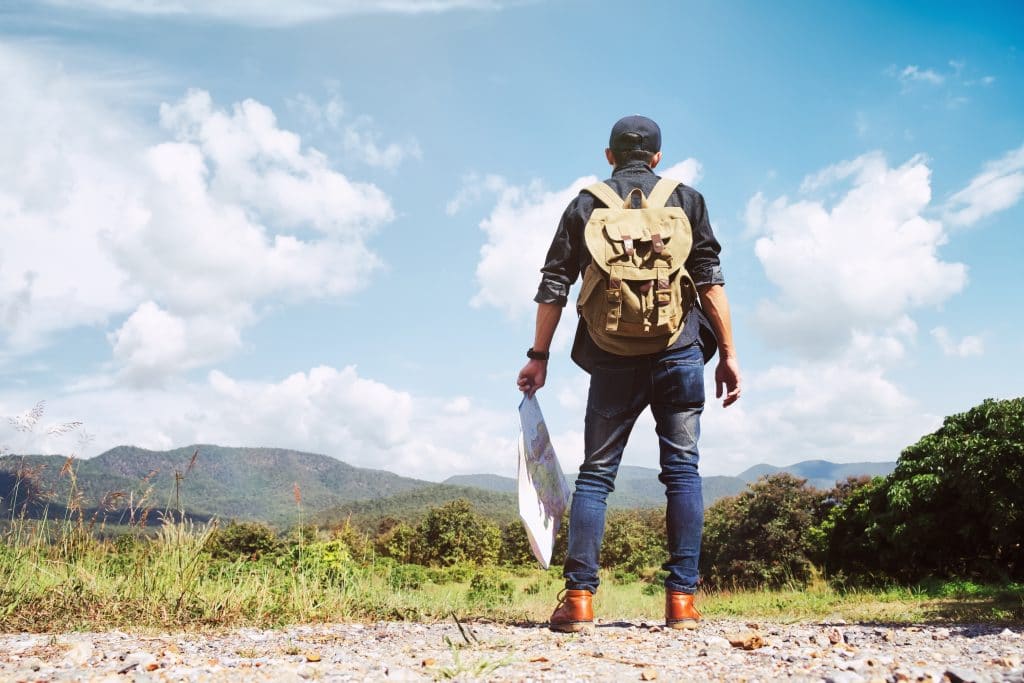Are You Feeling Lost? Learn How to Read a Map and Find out Where You Are
A quick guide to map reading for beginners.

Although technology has made many advancements in recent times, you can't always rely on it when you get lost. A GPS and compass are undoubtedly great tools, but knowing how to read a map is a skill that could save you during crucial moments.
When lost it can be difficult to know your surroundings or know the safest direction to head toward. That's why learning how to read a map will never fail you.
It's a practical skill that you can apply to many situations, and what's even better; map reading isn't as difficult as you might think!
It can appear to be overwhelming at first, but once you have picked up the basics, you'll soon be a pro at reading maps.
Read on to find out the best tips to help you read a map like a survival expert!
Firstly it's important to understand that there are different kinds of maps, and their functions differ depending on your situation. Although you can't always know where you're going to end up, understanding the differences between various maps will give you a better idea of which one you may need when the time comes.
Topographic Maps
These are the most common type of map you'll encounter if you are planning to head into the wilderness. They show areas in detail, with different features highlighted for better navigation.
For example, topographic maps will show the terrain, points of interest, roads, and distances in detail. This amount of information might sound overwhelming, but they are relatively straightforward to use once you get the hang of them.
Because of the geographic detail, these maps are typically used for lots of outdoor activities, such as camping, hunting, and hiking.
Tourist Maps
Tourist maps are probably the most common type of map and the one that you will most likely come across on a day to day basis. They show attractions and places of interest within a tourist area. They might be helpful as a last resort, but I wouldn't recommend these kinds of maps for serious survivalists.
Road Maps
If you have to leave your town or city at a minute's notice, make sure you have a road map in your vehicle.
Their design is pretty self-explanatory. Road maps highlight the different routes to take via road, and they should make clear distinctions between the various kinds of roads. This will help you from driving down a back road when you really need to take the highway.
While they're not ideal if you're driving solo, they can be useful to consult if you get the chance to pull over.
Understanding the Key Features
Before you can start directing yourself, you'll first need to get to grips with the features of a map. Most maps will have these features in some form or another, and it's essential to take the time to understand them.
If you misinterpret a feature, or don't know how to use it, then having a map on hand would be pretty pointless. Worse still, if the map is read incorrectly you could end up leading yourself further into danger.
Grid References
Each map will be divided into grid squares, using horizontal and vertical grid lines. They are divided based on the longitude or latitude. Latitude shows the north-south position on the earth's surface, while latitude shows the east-west position.
Grids will help you to quickly scan distances, as they typically use a simplistic scale that is easy to understand at a glance. Usually, each square from left to right is representative of 1km in real life.
Legend
The legend (commonly referred to as the 'key') shows you how different features of the map are used. The legend has symbols that will correlate to certain features.
For example, a border is often represented by a dashed line. The legend makes it easier for you to understand the map, and it allows the map to condense more information into a smaller space by using symbols.
North Arrow
When cartographers design maps, they typically ensure that the top of the page is representative of the north. North is often viewed as a neutral position with which to orientate yourself from, and can work as a reference point for other directions.
On a map, north is usually highlighted by an arrow-shaped icon with an 'N' lettered underneath it, which will keep you in the right direction.
It is worth noting that many topographic maps point to what's known as 'true north,' which means the North Pole. They may also point to 'magnetic north,' which is where a compass would point towards. Some more detailed maps may show a compass rose and highlight all four primary directions for your convenience.
It is important that you understand the difference between these two "North's" and that you do not get the symbology mixed up as this could lead to incorrect reading of maps and again put you further away from assistance.
Scale
It would be a big task to create a life-sized map. Instead, maps use a scale to reduce an area to a readable size.
A scale will help you by using a given distance as equal to a specific measurement. For example, on a 1:10,000 scale, one of any unit on the map would equal 10,000 of the same unit on the real-life ground. It is worth noting, when referring to map reading information, that the orienteering world typically uses meters to measure distance.
Deciding on the appropriate scale for you will depend on what area you intend to be in. However, a standard scale ratio for wilderness purposes is usually 1:50,000. This ratio means that for each millimeter on the map, there are 50 meters in the real outdoors.
For a quicker interpretation of distances, without having to measure each millimeter individually, you can use the grid squares on the map to help you. Each square is usually equal to 20mm, so, using a 1:50,000 scale, each square would equate to 1km in real life.
It is also worth thinking about how detailed you want your map to be. Generally, the smaller the scale is, the more detailed a map will be, and it will show more geographical features such as where trees and rocks are. This is useful to remember in terms of survival preparation.
Where Are You?
Now that you understand the basic features of a map, it's time to start learning how to read one.
To begin reading a map, you'll need it to point towards the north direction. You can do this by placing your survival compass on the map, pointing it towards the top, and then moving your position until the compass's needle is pointing north. It's really as simple as that.
From there, it's time to figure out where you are in relation to the rest of the map so that you can start your journey. This is a relatively simple process if you happen to be on a road with street signs or markers. You can find them on your map, and mark your position from there.
However, if you're stuck in what feels like the middle of nowhere, your best option is to look at what you can see in real life, such as certain terrains or woodland, and try to match this up on the map. Using significant natural features, such as bodies of water or mountainous zones, will give you the best chance of finding your spot.
Once you feel confident about your position, be sure to mark it on the map, so you have a clear starting point. It is important to remember that if you are in an empty area with little to no roads or public spaces, then your position on the map doesn't need to be 100% accurate. As long as you have a rough idea, give or take a mile or two, then you should be able to head in the right direction without this being an issue.
I hope this has given you some idea of how to read a map in a situation where you are lost but for more information on map reading and all things survival-related, please visit survivalfront.com.





Comments
There are no comments for this story
Be the first to respond and start the conversation.